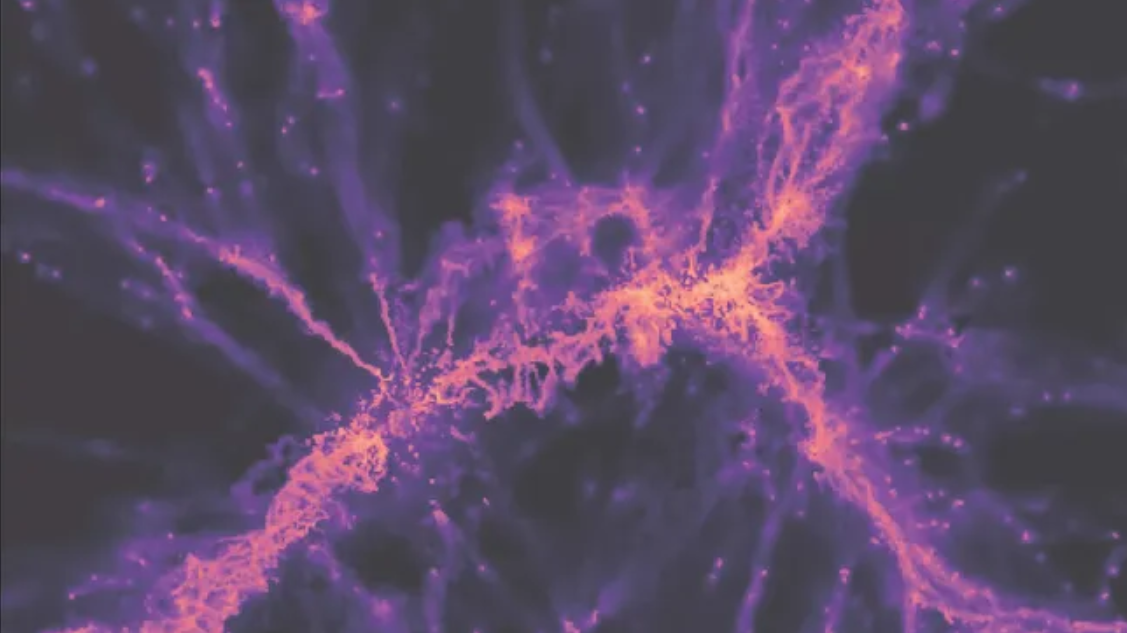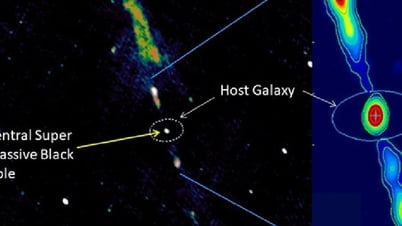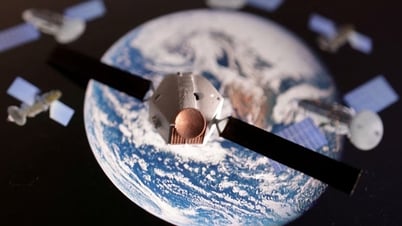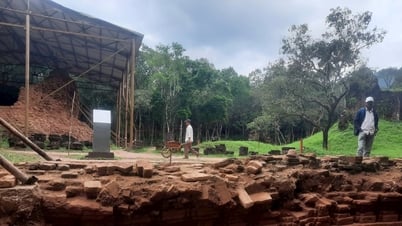
A strand of the cosmic web as simulated by a supercomputer
Photo: University of Milano-Bicocca/MPA
Seen as a whole, the universe appears as a complex spider web, filled with cosmic filaments made of gas, dust and dark matter, separated by large voids.
Now, in a stunning image, researchers have captured one of the cosmic filaments connecting two galaxies at a time when the universe was just 2 billion years old, near the dawn of time.
This is the most detailed image of an ancient thread of the cosmic web ever captured.
cosmic web
Cosmic filaments extend across millions of light years and form what is known as the "cosmic web". Galaxies are strung together to form large filaments, and at their intersections are galaxy clusters, the most densely populated regions of the web.
From these filaments, gas is transferred into the interior of galaxies, allowing the galaxies to grow. Cosmic filaments also connect galaxies into galaxy clusters, allowing the creation of the largest structures in the universe.
The structure of the cosmic web is not random, but is shaped by dark matter (which makes up 85% of all matter in the universe).
Dark matter does not interact with light, so it is difficult to detect. However, dark matter interacts with and controls normal matter. In this process, dark matter holds everything together and gives structure to the universe.
The gas flows inside the filaments can provide information about how galaxies form and evolve. However, it is difficult to observe the gas inside these filaments because the most common element, hydrogen, also emits light, albeit faintly.
Exploring the cosmic fiber
To capture the new image, astronomers from the University of Milano-Bicocca (Italy) and the Max Planck Institute (MPA, Germany) used 150 hours of observations from the European Southern Observatory's VLT telescope in Chile.
As a result, they captured a detailed image of a cosmic filament that spans about 3 million light-years and connects two galaxies with supermassive black holes at their centers.
With these observations, researchers have for the first time relied on direct measurements to reach the gas boundaries inside galaxies, according to author Davide Tornotti of the University of Milano-Bicocca.
The light from the cosmic filament traveled 12 billion light years before reaching the telescope's lens on Earth, according to a report published in the journal Nature Astronomy .
The new discovery opens the door to further research into how the structures of the "cosmic web" formed and evolved throughout history.
Source: https://thanhnien.vn/anh-chup-xa-lo-vu-tru-ket-noi-hai-thien-ha-khi-thoi-gian-bat-dau-185250217095229153.htm


![[Photo] Ready for the top competitions of Vietnamese table tennis](https://vphoto.vietnam.vn/thumb/1200x675/vietnam/resource/IMAGE/2025/5/18/9c547c497c5a4ade8f98c8e7d44f5a41)
![[Photo] Party and State leaders attend the special art program "You are Ho Chi Minh"](https://vphoto.vietnam.vn/thumb/1200x675/vietnam/resource/IMAGE/2025/5/18/6895913f94fd4c51aa4564ab14c3f250)
![[Photo] Many young people patiently lined up under the hot sun to receive a special supplement from Nhan Dan Newspaper.](https://vphoto.vietnam.vn/thumb/1200x675/vietnam/resource/IMAGE/2025/5/18/6f19d322f9364f0ebb6fbfe9377842d3)
![[Photo] Party and State leaders visit President Ho Chi Minh's Mausoleum](https://vphoto.vietnam.vn/thumb/1200x675/vietnam/resource/IMAGE/2025/5/19/d7e02f242af84752902b22a7208674ac)



























































































Comment (0)